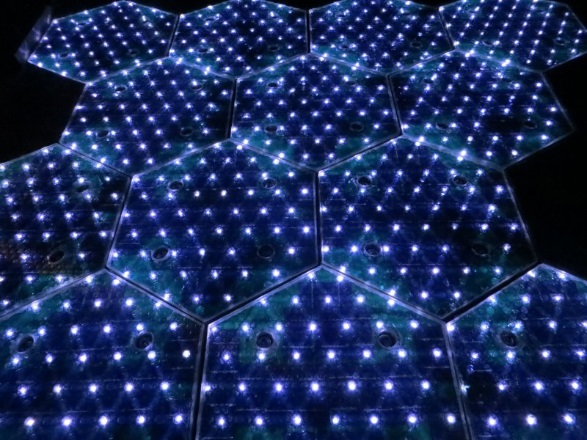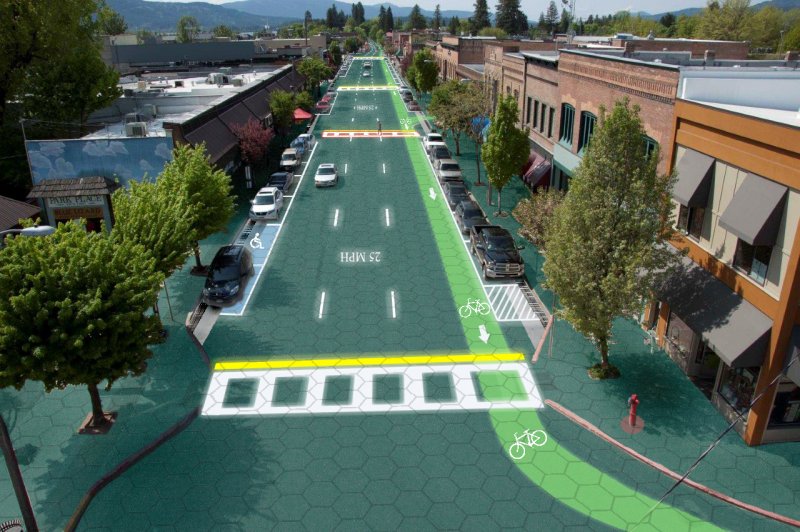New Pavement System...Supported by Solar Panels?
Originally posted in U.S. DOT's Fast Lane Blog by Michael Trentacoste, FHWA associate administrator for the Office of Research, Development, and Technology, and Robert C. Johns, former Volpe director
One of the ways DOT serves the American public is by working with small businesses to find new ways to improve our nation’s roadways. The Small Business Innovation Research (SBIR) program at Volpe, The National Transportation Systems Center, encourages small businesses to explore potential solutions to transportation challenges.
In 2009, we solicited research on a topic sponsored by the Federal Highway Administration (FHWA): To develop a new pavement that could generate power and transfer it to the power grid. The SBIR Phase I submission had to meet the following requirements:
- Use recycled material;
- Withstand traffic loads; and
- Be durable enough to avoid costly replacement cycles.
In response to this solicitation, Solar Roadways, Inc., began proof-of-concept work. Their proposal: Self-sustaining pavement, made from hexagon-shaped solar panels. If successful, this pavement could potentially eliminate the current practice of replacing asphalt, and ultimately transform the nation’s roadways into an intelligent pavement system.

Since Solar Roadways' proof-of-concept results were promising, we awarded a Phase II contract in 2011 to develop and test a prototype for a pavement made of solar panels.
After testing multiple glass samples in various shapes for traction, load, impact resistance, and transmissivity, Solar Roadways discovered that the optimal solar panel could be made from low-iron glass with a transparent surface. The resulting system surpasses the limitations of today’s asphalt pavement product by providing four-color LED lighting and heating features that melt snow from the roadway.
Everyone was encouraged by the results of the initial prototype pavement testing, and SBIR recently awarded Solar Roadways a follow-on Phase IIB contract to continue developing and testing this exciting innovation. One of the shortcomings Solar Roadways has yet to resolve is the manufacturing process for the composite solar panels; each of the solar cells is currently manufactured by hand, and they are very costly to produce.

Artist's rendition of downtown Sandpoint, Idaho, with solar roadway panels installed. (Sam Cornett photo)
In addition to Volpe's SBIR funding, Solar Roadways has also raised $2.2 million through its own crowdfunding efforts. They used the funding contributed by the public to hire employees for the company while SBIR funds are used to conduct further testing and make product and process refinements specified in the Phase IIB contract.
With the increasingly important worldwide goal for sustainable pavement solutions, DOT has received a lot of positive feedback about this project, and enthusiasm for Solar Roadways' work is pretty high. Because this idea offers the ability to melt snow on the roadway or keep water from freezing, even if the cost for comprehensive highway implementations is too high, this innovation could still be useful in smaller areas such as parking lots, sidewalks, driveways, and bike lanes.

